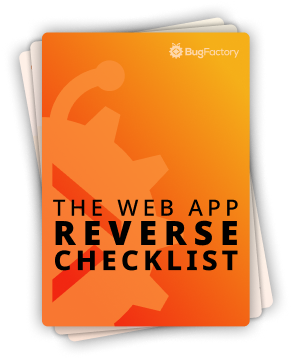Detecting Exit Intent with Vanilla JavaScript
Use event handlers to detect exit intent so you can react to grab your website visitors' attention before leaving and perhaps convert them into repeat visitors.
By Christoph Schiessl
on JavaScript
How to Recursively Create Directories
Creating directories in Python using the pathlib module, including normal and recursive creation, handling existing directories, and file system permissions.
By Christoph Schiessl
on Python
The Built-In sorted() Function
Python's sorted() function makes sorting easy and performant, guaranteeing stability and allowing descending order and custom mapping.
By Christoph Schiessl
on Python
Starting and Stopping uvicorn in the Background
Learn how to start and stop uvicorn in the background using a randomly selected free port number. Useful for running test suites that require live-webservers.
By Christoph Schiessl
on Python
The Built-In chr() and ord() Functions
Discover Python's built-in functions chr() and ord() for handling Unicode characters and converting between integers and characters.
By Christoph Schiessl
on Python
The Built-In bin(), oct() and hex() Functions
Learn about the Python built-in functions bin(), oct(), and hex() functions for converting integers to binary, octal, and hexadecimal representations.
By Christoph Schiessl
on Python
How to Validate Word Counts for SEO
Learn how to validate the word count of your pages for SEO purposes. It uses JavaScript to parse your sitemap.xml and count the words on all mentioned pages.
By Christoph Schiessl
on JavaScript
The Built-In min() and max() Functions
Python's min() and max() functions can take an iterable or multiple positional parameters, and support a key parameter for custom comparisons.
By Christoph Schiessl
on Python
The Built-In sum() Function
In this article, we explore Python's built-in sum() function, its parameters, and some extreme use cases it wasn't even designed for.
By Christoph Schiessl
on Python
Date/Time Formatting According to RFC 5322
Learn about the custom date/time formatting rules defined in legacy standards like RFC 5322 and how to work with them using Python's datetime module.
By Christoph Schiessl
on Python
How to Format all JSON Files in a Git Repository
Do you struggle with inconsistent JSON formatting across your Git repository? Learn how to reformat everything using Python with this step-by-step guide.
By Christoph Schiessl
on DevOps, Git, and Python
Function Definition with Catch-All Parameters
Learn how to use catch-all parameters in Python functions with this guide. Capture excess positional and keyword arguments to make your functions more flexible.
By Christoph Schiessl
on Python
Repairing Corrupted Indexes with REINDEXing
This article outlines how to rebuild indexes with REINDEX. As an example, we will deliberately corrupt an index for a column that uses a custom ENUM column.
By Christoph Schiessl
on PostgreSQL
Custom ENUM Type Columns and ORDER BY
Learn how custom ENUM types in PostgreSQL can affect SELECT queries and ORDER BY clauses. Be mindful of indexing and typecasting.
By Christoph Schiessl
on PostgreSQL
Telling Docker Who You Are
Learn how to avoid permission issues when creating files on a Docker bind-mount volume from within a container and manage user IDs and group IDs on Linux.
By Christoph Schiessl
on DevOps
and Docker
Boolean Operators and Short-Circuiting
Fully understand Python's boolean operators for negation, conjunction, and disjunction. Master operator precedence and short-circuiting.
By Christoph Schiessl
on Python
The Built-In any() Function
Learn how to use the built-in any() function in Python to determine if any element in an iterable is True, with implementation and performance insights.
By Christoph Schiessl
on Python
The Built-In id() Function
Learn about object identities and comparisons in Python. Discover the built-in id() function, the is and is not operators, and more.
By Christoph Schiessl
on Python
The Built-In bool() Class
Learn about boolean values in Python and the standard truth testing procedure. Understand how objects are converted to True or False.
By Christoph Schiessl
on Python
Function Definition with Default Parameters
Learn about Python functions with default parameters. Understand how default parameters work and some essential restrictions and evaluation rules.
By Christoph Schiessl
on Python
The Built-In callable() Function
Learn about the callable() function in Python. This article explains how everything in Python is potentially callable, including classes and instances.
By Christoph Schiessl
on Python
Function Definition Basics
Explore Python's function definition statement and discover its features with this series of articles. Get started with this simple introduction.
By Christoph Schiessl
on Python
Portability via Static Linking of libpq
Learn how to remove LDAP support from PostgreSQL packages to remove indirect dependencies, thereby making your programs more portable across systems.
By Christoph Schiessl
on DevOps, PostgreSQL, and Docker
The Built-In all() Function
Learn how to use the built-in all() function in Python for boolean logic, with examples and different implementations.
By Christoph Schiessl
on Python
